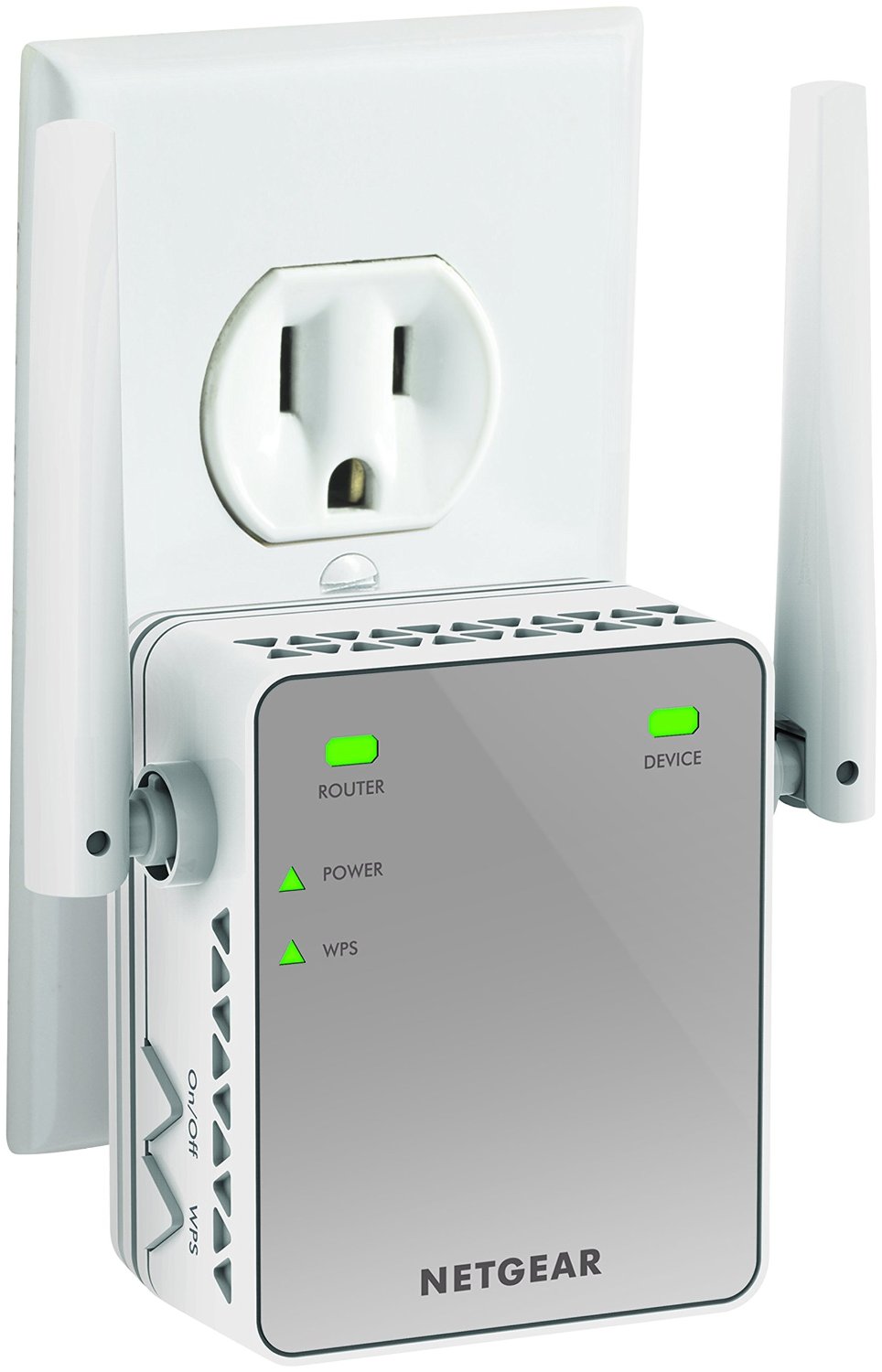


Wi-Fi extenders will use the 2.4GHz and 5GHz bands to handle communications between client devices and your router. Mesh Wi-Fi systems also typically feature a dedicated wireless backhaul channel – called ‘tri-band Wi-Fi’ in marketing speak – to cut down on congestion. If you’re on a voice or video call, for example, you’ll lose the connection if your laptop, phone or tablets switches network mid-call. While some Wi-Fi extenders let you use the same SSID and network password, it’s not always easy to do. Plus, even though it’s the same network name, it is a different network, so switching between your router and the extender isn’t seamless as it is with mesh. Powerline can also work if you have a garden room or office which has electricity.

A set of these could be what you need if the room in which you need coverage is just too far away from your main router. Not all Powerline adapters have Wi-Fi built in as well as Ethernet ports, but those that do almost act like Wi-Fi extenders. These use your home’s mains wiring as a sort of Ethernet cable, with one adapter plugged in near your router and connected via Ethernet, and the second adapter is plugged in in the room where you need an internet connection. If it’s not practical to do that – not everyone can run dozens of metres of Ethernet cables up the stairs – then a Powerline adapter might be what you’re after.
#BEST HOME WIFI BOOSTER PC#
Sending data over wires will always provide higher speeds and greater stability than wireless and so, if you need better Internet connectivity in your office for a desktop PC or a laptop, going wired is actually a better choice.
#BEST HOME WIFI BOOSTER PRO#
There’s Alexa and Google Assistant support, but these are no real use if you don’t have the R15 or M15 as the extender doesn’t support a guest network.Īt the time of review, the Eagle Pro AI was considerably cheaper than TP-Link’s RE505X, making it better value – but only if you already have an R15 router or are going to buy one.Īs we explain in our roundup of the best Ethernet cables, if it’s convenient to do so, go wired. It’s only there you can force the E15 to use WPA3 security, for example. It’s relatively simple to set up with the Eagle Pro AI app, and using that you can see which devices are connected to the extender (even if you don’t use it in mesh mode) and there’s a bizarrely named Health Mode which allows you to turn off Wi-Fi overnight as a way to prevent your kids using their devices.Īnnoyingly, quite a few settings aren’t available in the app: if you tap Advanced Mode, a web browser opens and presents a traditional router management interface that’s way too small for a phone screen. There’s also a useful signal meter on the front which tells you if you’ve plugged it in in a good location or not.
#BEST HOME WIFI BOOSTER TV#
The E15 has fold-out antennae, for improving the signal range and there’s a Gigabit Ethernet port on the bottom edge which can be used to connect wired devices such as TV set-top boxes. Quite obviously, there’s no point at all in buying the E15 if you don’t even have a Wi-Fi 6 router as you’ll be paying more but not benefitting from the extra speed and features. Used in this way, the E15, as with the TP-Link’s OneMesh, you get much better speeds than if you were to use the E15 with another brand of Wi-Fi 6 router, where it would revert to working in half-duplex mode. The E15 is part of the Eagle Pro AI range from D-Link and is designed to be used in conjunction with the R15 router and, optionally, the M15 mesh Wi-Fi system. Because of the way they work, which is to take the signal from your existing router and re-broadcast it, they need to be plugged in roughly mid-way between the router and the room which doesn’t have good Wi-Fi coverage.

We’re not trying to put you off buying a Wi-Fi extender, but as long as you’re sure one is right for you, here’s what to look for. You can only get away with the cheaper non-Wi-Fi adapters if the computer or device you’re connecting (such as a PC) doesn’t have Wi-Fi and needs a network cable connection. Just note that you’ll need a pair of adapters, one of which has built-in Wi-Fi. Even then an alternative – which might prove more effective – is to buy a Powerline adapter which uses your home’s mains wiring to transmit the internet signal to exactly where you need it. However, if Wi-Fi in your home is generally good, but there are one or two rooms where it’s patchy or doesn’t reach at all, then picking a Wi-Fi extender might well be the answer.


 0 kommentar(er)
0 kommentar(er)
